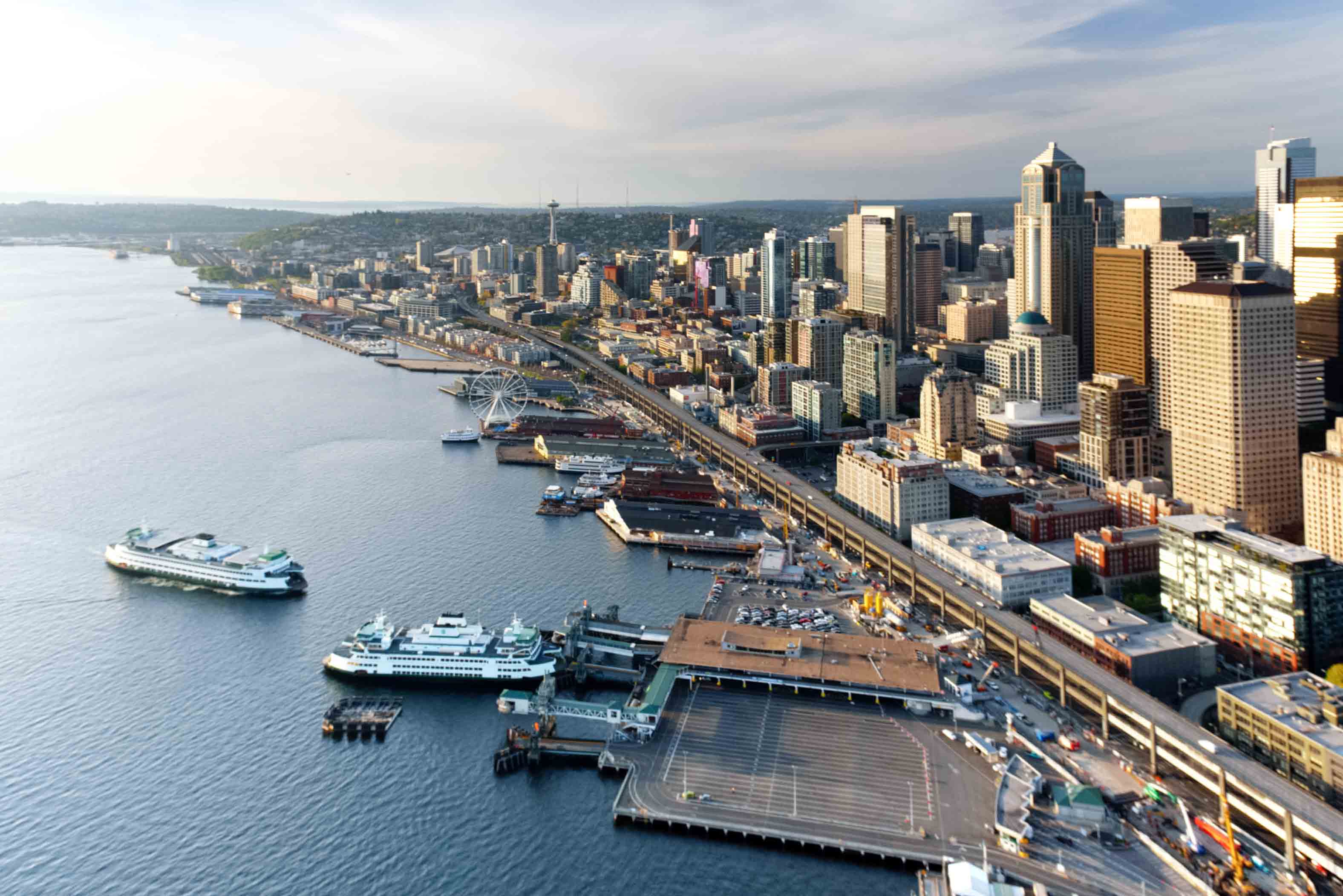
By Garry Papers, OPCD
As the residential population within greater downtown grows, and more workers arrive, the design and usability of the public realm around these buildings becomes ever more important. Parks, sidewalks and a variety of plazas are key for providing places for pedestrians, workers, visitors and residents to pause, rest, converse and refresh.
 There are numerous plazas – small and large – dotted around downtown, and they have different origins. Some are official city parks parcels even if not the traditional turf lawn, such as Westlake Park, Pioneer Place, and Occidental Square. Others are spaces associated with public buildings, and some are privately owned and managed and were voluntarily provided by the building development. And some are privately owned public spaces (or POPS), which result from a code bonus option where the plaza and/or other public benefits are in exchange for additional building area, or an alley vacation process.
There are numerous plazas – small and large – dotted around downtown, and they have different origins. Some are official city parks parcels even if not the traditional turf lawn, such as Westlake Park, Pioneer Place, and Occidental Square. Others are spaces associated with public buildings, and some are privately owned and managed and were voluntarily provided by the building development. And some are privately owned public spaces (or POPS), which result from a code bonus option where the plaza and/or other public benefits are in exchange for additional building area, or an alley vacation process.
POPS have been implemented over the past 45 years, and they vary widely in design treatment and character as the code process and criteria evolved during those decades. This summer our student intern Mary Xiao conducted a systematic assessment of 36 POPS plazas in downtown. The analysis was grounded in the public place methodology developed by the globally renowned Gehl Institute. The goal of the assessment is to document the physical features of the plazas, to objectively evaluate them against recognized criteria, and then identify possible improvements. Lessons learned from the assessment will inform future refinements to the bonus program, design guidelines for public spaces, and other policy initiatives. Certain plazas may voluntarily take up suggested improvements, to increase the amenity, comfort and usability for all people.
Garry Papers is a Senior Urban Designer at OPCD.
(We will provide a link to the assessment in a follow up when it is completed)
